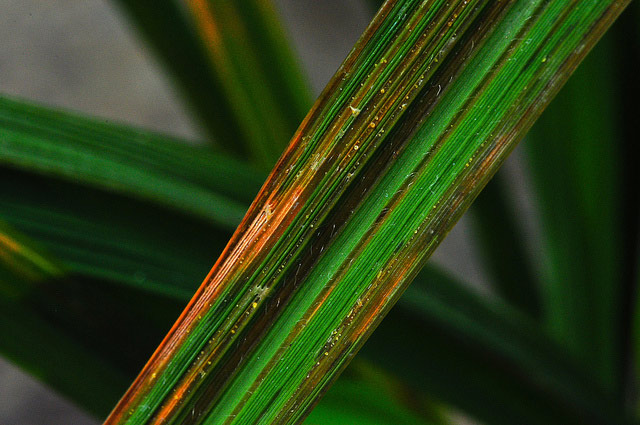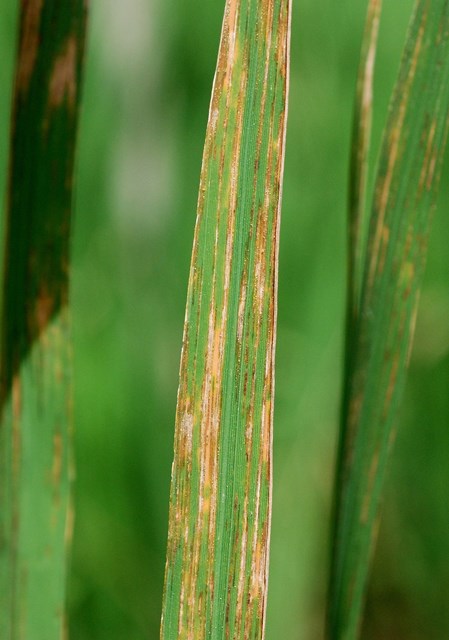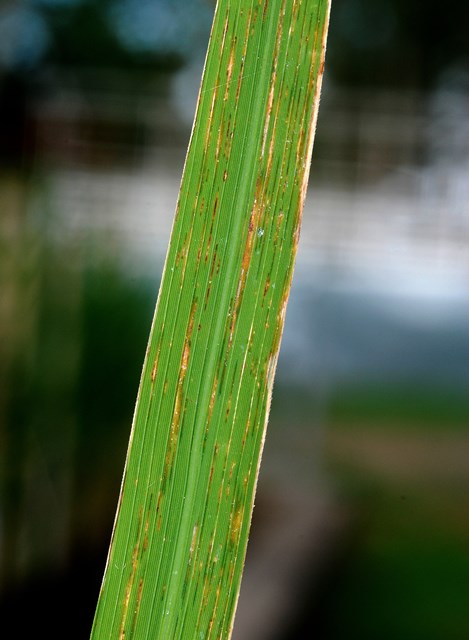Bacterial leaf streak
What it does
 Bacterial leaf streak is caused by Xanthomonas oryzae pv. oryzicola.
Bacterial leaf streak is caused by Xanthomonas oryzae pv. oryzicola.
Infected plants show browning and drying of leaves. Under severe conditions, this could lead to reduced grain weight due to loss of photosynthetic area.
Why and where it occurs
Bacterial leaf streak occurs in areas with high temperature and high humidity.
It is transmitted through seeds and infected stubbles to the next planting season. It can occur in fields where X. oryzae pv. oryzicola bacteria is present on leaves, in the water, or in the debris left after harvest.
Particularly, the disease is common in tropical and subtropical regions of Asia, Africa (including Madagascar), South America, and Australia.
It can affect the plant during early stages, from maximum tillering to panicle initiation. Mature rice plants can easily recover from leaf streak and have minimal grain yield losses.
How to identify
Check for lesions:
- Symptoms initially appear as small, water-soaked, linear lesions between leaf veins. These streaks are initially dark green and later become light brown to yellowish gray.
- The lesions are translucent when held against the light.
- Entire leaves may become brown and die when the disease is very severe.
- Under humid conditions, yellow droplets of bacterial ooze, which contain masses of bacterial cells, may be observed on the surface of leaves.
Bacterial leaf streak may be confused with narrow brown spot.
To confirm:
- leaf streak lesions are usually thinner than those of narrow brown spot
- narrow brown spot lesions are not translucent, nor do they produce bacterial ooze
When the advancing part of the streaks are cut and placed in a glass with water, a mass of bacterial cells can usually be seen oozing out of the leaf, which makes the water turbid after five minutes.
Bacterial leaf streak may also be confused with bacterial blight.
Blight and streak symptoms look the same at the early stage of infection, particularly if lesions of both diseases occur on the same leaf. Tests (i.e., biochemical, pathogenicity, or serological) can be done to identify the disease.
Why is it important
Based on reported cases, yield loss caused by bacterial leaf streak can range from 8−17% in the wet season, and 1−3 % in the dry season.
How to manage
To prevent and effectively manage bacterial leaf streak:
- Plant resistant varieties.
- Treat seeds with hot water.
- Keep fields clean—remove weed hosts and plow under rice stubble, straw, rice ratoons, and volunteer seedlings, which may be infected by the bacteria.
- Use balanced amounts of plant nutrients, especially nitrogen.
- Ensure good drainage of fields (in conventionally flooded crops) and nurseries.
- Drain the field during severe flood.
- Dry the field during the fallow period to kill the bacteria in the soil and in plant residues.
- In cases of severe infection, when yield may be affected, a copper-based fungicide applied at heading can be effective in controlling the disease.


